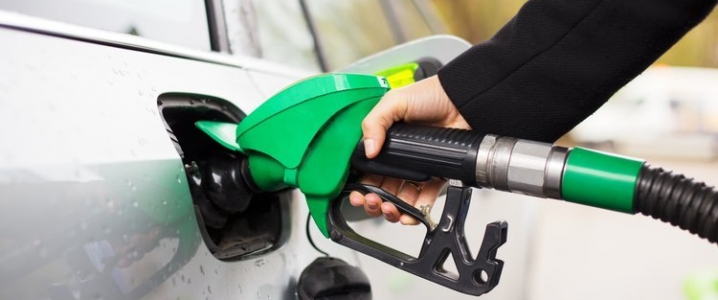The latest oil price decline has been blamed on several things, including anxiety about the state of the global economy, the sanction waivers Washington granted Iran’s biggest crude oil buyers, and, of course, fast-rising oil production in the U.S. shale patch. But while all these were indeed factors pressuring prices, one other factor has been a strong headwind but has stayed out of the spotlight: U.S. gasoline consumption.
Reuters’ John Kemp brought into the spotlight this week, citing a report from the Energy Information Administration that found gasoline consumption in the world’s largest user of crude oil remained flat on the year over the first ten months of 2018. That’s right, gasoline consumption did not move between January and October last year, despite an economy firing on all cylinders and a three month-driving season, plus relatively low prices for much of the period.
The average daily consumption of the fuel, Kemp reports, hovered around 9.34 million barrels. This was 20,000 bpd lower than the average for 2017. What’s more, the EIA expects gasoline consumption to have declined by 40,000 bpd over full-2018.
This, the data suggests, is attributable less to any economic growth patterns and more to a consistent decline in traffic growth, Kemp notes, adding that there are two chief factors at play when it comes to growth in traffic: the economy and oil prices. While the former, the Reuters analyst goes on, has been positive for traffic growth, this has not been the case with oil prices for much of the last 25 years, and that has discouraged traffic growth over the long term. Related: U.S. Seeks To Cripple Venezuela’s No.1 “Vehicle For Embezzlement’’
Yet in the past, slow traffic growth was not accompanying by a booming shale oil industry. In its latest Short-Term Energy Outlook, the EIA estimated U.S. crude oil production to have expanded by 1.6 million bpd in 2018 from the previous year, to 10.9 million bpd. Towards the end of the year, production ramped up to more than 11.7 million bpd. Most of this production is light crude, the kind of crude that is refined into gasoline.
Earlier this month Reuters reported excess supply of gasoline in the United States coupled with slow demand has pressured refiners margins, noting refining margins for the fuel in the U.S. sank to US$45.70 a barrel last week. The drop followed the fourth weekly increase in gasoline inventories in the country, all of them quite hefty, leading to an all-time high of gasoline supplies, at 259.6 million barrels as of January 18. Over the four weeks to January 18, the Energy Information Administration reported that gasoline inventory builds reached a combined 26.6 million barrels.
Now that’s quite a build in gasoline inventories and provides useful context for price movements. These are unlikely to become a lot more lively this year despite OPEC’s cuts, and this time it won’t be U.S. gasoline consumption driving them. It will be the global economy and U.S.-Chinese relations.
The former, according to an earlier report by Kemp, would determine oil demand growth: “The extent of the slowdown depends on whether global growth starts to accelerate again, settles into an extended soft patch, or falls into an outright recession. The difference between each of these three scenarios amounts to several hundred thousand barrels per day (bpd) of consumption growth, dwarfing all other influences on oil prices in 2019.”
The latter, U.S.-China relations, are going nowhere, it seems. Just when reports on the topic began to turn more optimistic, the U.S. indicted Chinese electronics conglomerate Huawei on charges of industrial espionage, violations of the Iranian sanctions, money laundering, and bank fraud. Naturally, this did not sit well with Beijing, which called the charges unfair and politically motivated.
Meanwhile, U.S. refiners will in all likelihood be forced to continue overproducing gasoline as they increase their middle distillates production in response to growing demand—should this demand remain growing, of course—so the overhang in gasoline will stay and continue to keep a lid on prices. This is good news for drivers, but whether it will be good enough for a pickup in traffic remains to be seen.
By Irina Slav for Oilprice.com
More Top Reads From Oilprice.com:
- U.S. May Have To Back Off Iran Sanction Waivers Again
- New Data Confirms That China’s Energy Revolution Is Well Under Way
- Oil Markets Unmoved By Modest Inventory Build

















